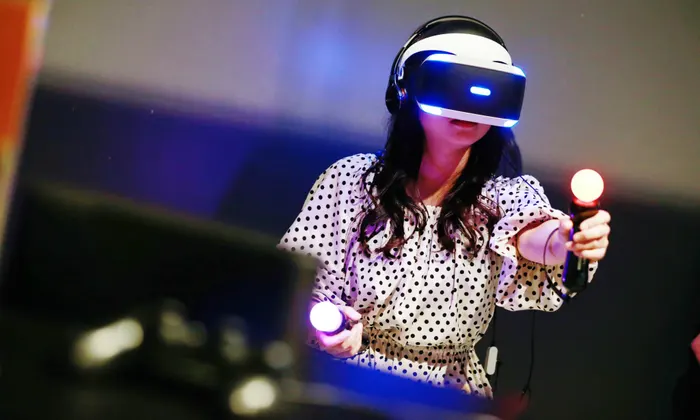Virtual Reality (VR) gaming is a growing industry that is slowly being adopted by video game developers, gamers, and hardware manufacturers. With the introduction of more powerful hardware and better immersive experiences, VR has become a viable option for both casual and hardcore gamers. Virtual Reality offers users the ability to experience a whole new type of gaming where they can interact with digital worlds in unprecedented ways.
What You Need to Get Started
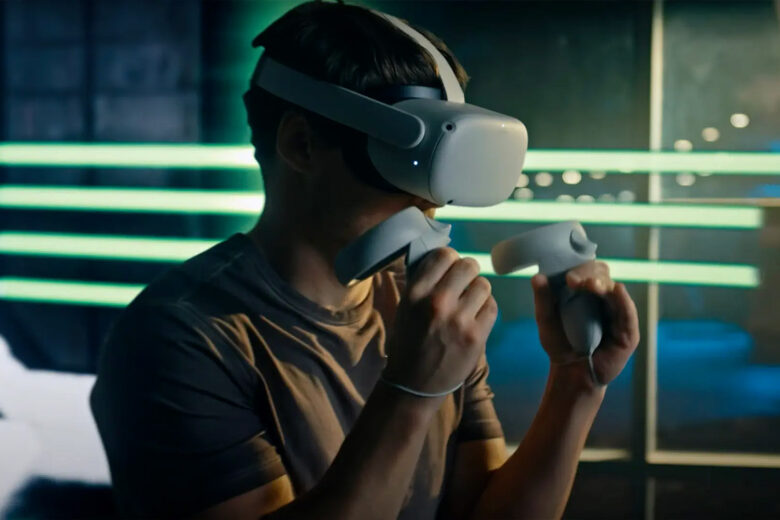
In order to play virtual reality (VR) games, you will need some basic equipment. These include a powerful computer, a VR headset, a gamepad-style controller or motion sensors, and the actual game itself. Let’s look at each of these components in more detail so you can determine which options best suit your needs.
PC or Console
High-end gaming PCs make for an ideal choice when it comes to VR because they tend to have more powerful processors and GPUs than other gaming systems, allowing them to produce better graphics and higher resolutions. On top of that, they also have relatively large storage capacities, which allows for larger games than would be possible on a console. The downside is that gaming PCs usually require more upfront investment in terms of hardware, but on the whole, they can represent excellent value for money as long as you seek out superior components.
If you would rather not invest in a powerful gaming PC right away, then a console might be the best option for getting into virtual reality gaming. They are more moderately priced than PC equivalents and can produce very decent visuals too — although they may not reach the same level of detail as what a PC is capable of unless you purchase an HD update or similar add-on hardware. The other point to note here is that while consoles typically justify their price tag by offering unique game experiences (such as exclusive titles developed specifically for the system in question), these experiences may be limited when it comes to VR-enabled games due to their comparatively smaller game library.
Headset
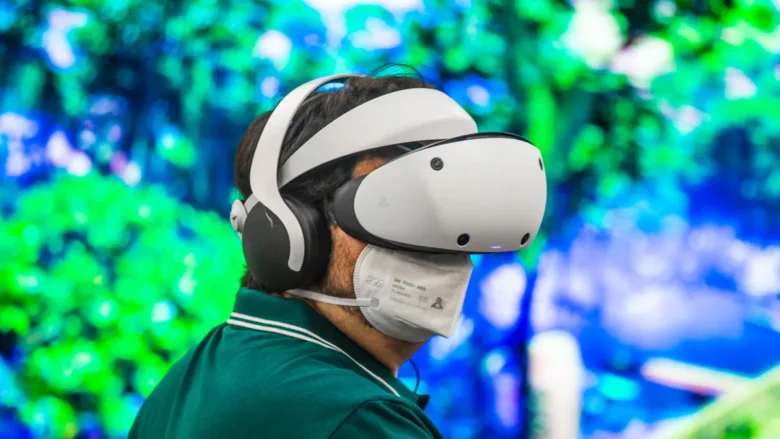
The most obvious and crucial piece of hardware that is needed to play virtual reality (VR) games is a Virtual Reality Headset. The headset that you purchase should be compatible with the platform or gaming system that you plan to use for your VR experience.
Head Strap For your Headset
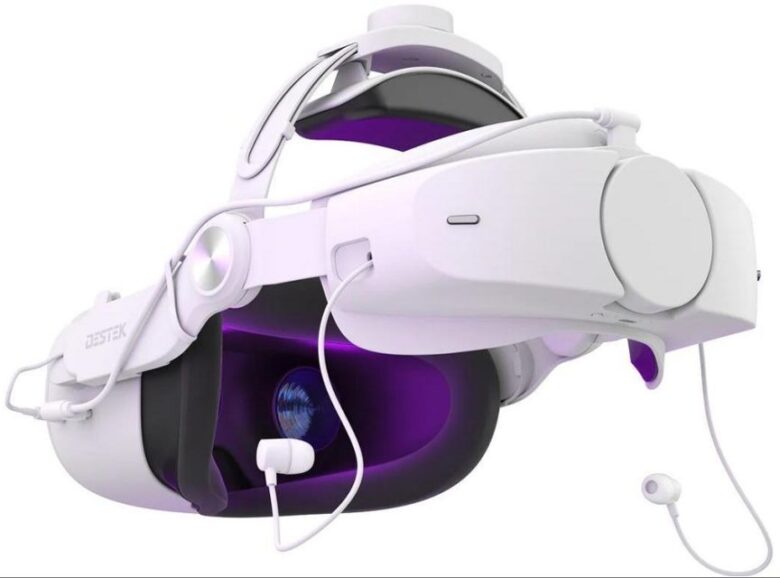
When selecting a headset and head strap, it is important to take into consideration factors such as comfort levels and optical capabilities. A lightweight headset in combination with a high quality head strap from Destek will ensure a comfortable fit throughout your VR session, while an adjustable Quest 2 battery head strap ensures that your VR equipment stays securely in place so there are no distractions while playing your favorite game.
In addition, one should also determine the optical quality of their device by considering factors such as field of view (FOV), refresh rate, and resolution of the display. A wider FOV provides for faster immersion into the game’s environment and allows for a great user experience.
Controllers
VR controllers are an essential part of any virtual reality setup. They provide an intuitive way to interact with the games and other applications you will experience in VR. Controllers come in many shapes and sizes, from motion-sensing wands to handheld gamepads similar to those found on gaming consoles.
Common controls for VR include joysticks and buttons, trigger buttons for locomotion (e.g., walking), gyroscopes, accelerometers, and magnetometers built into the controllers to enable tilt-sensing capabilities. These components enable you to move your hands or body while also interacting with elements within a game or experience in a more natural way than with traditional gamepad controls.
VR-enabled games
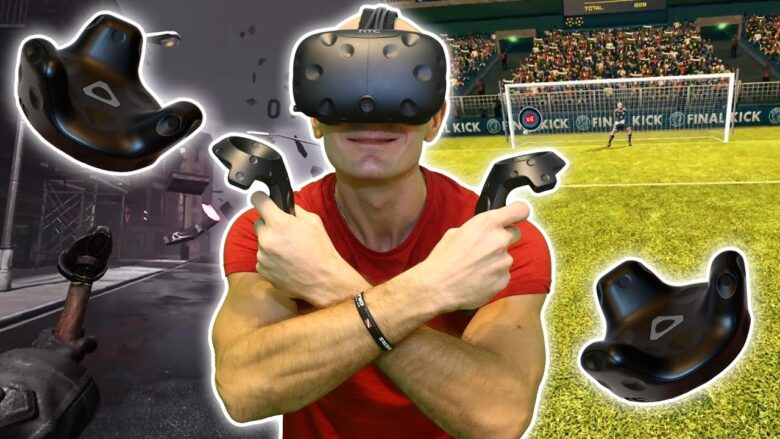
Since it’s hard to get into a real-world experience, virtual reality (VR) has been gaining in popularity across the board, from gaming to education. VR-enabled games are immersive experiences, giving you the feeling of being inside the game with 3D visuals and full-body motion controls.
Room-scale setup
If you want to take full advantage of most virtual reality games and experiences, you should make sure your gaming area is properly set up. It’s recommended to use a room-scale setup that requires players to move around and interact with their environment in order to play. This setup is also perfect for people who want to replace their traditional living space with a virtual one.
To set up a room-scale experience, you will need at least four sensors, two if using VIVE Trackers instead. Make sure that the sensors can point at each other from two different corners of the play area for maximum motion-tracking precision. The sensors should also be connected to a powerful gaming PC or laptop that meets the minimum system requirements for VR. It’s also helpful if your headset offers great visual clarity and good ergonomics so it won’t take away from your experience. You can also get accessories like VIVE Deluxe Audio Strap or VIVE Wireless Adapter to add more comfort and convenience while playing virtual reality games.
Cables
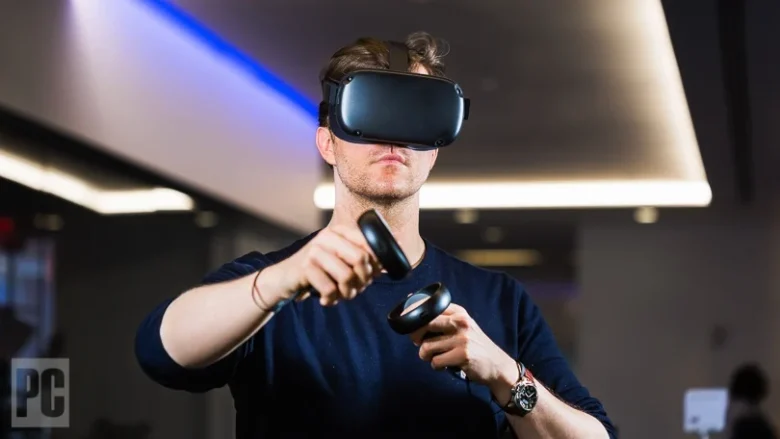
In addition to your headset and computer, there are additional cables that are needed to play VR games or explore the world of virtual reality. These include HDMI, USB (2.0 or 3.0), and power cables, which all come standard with most VR headsets. There may also be a DisplayPort cable required depending on your graphics card and PR adapter.
In order to ensure optimal performance and maximum enjoyment, you should double-check that your setup includes the necessary cables of adequate length for setup in your desired space before attempting to use your system for the first time. A connection failure could ruin the entire experience and cause system instability. It is much better to be sure that these connections are correct before playing so you can avoid having a subpar gaming experience due to an inadequate cable setup.
Conclusion
Playing VR games is an exciting and engaging experience. With the right setup, you can fully immerse yourself in the virtual world and explore all its possibilities. We hope this article has helped provide you with a better understanding of what you need to play VR games and given you some ideas about how to create your own gaming station for maximum enjoyment. So grab your headset and enjoy!

